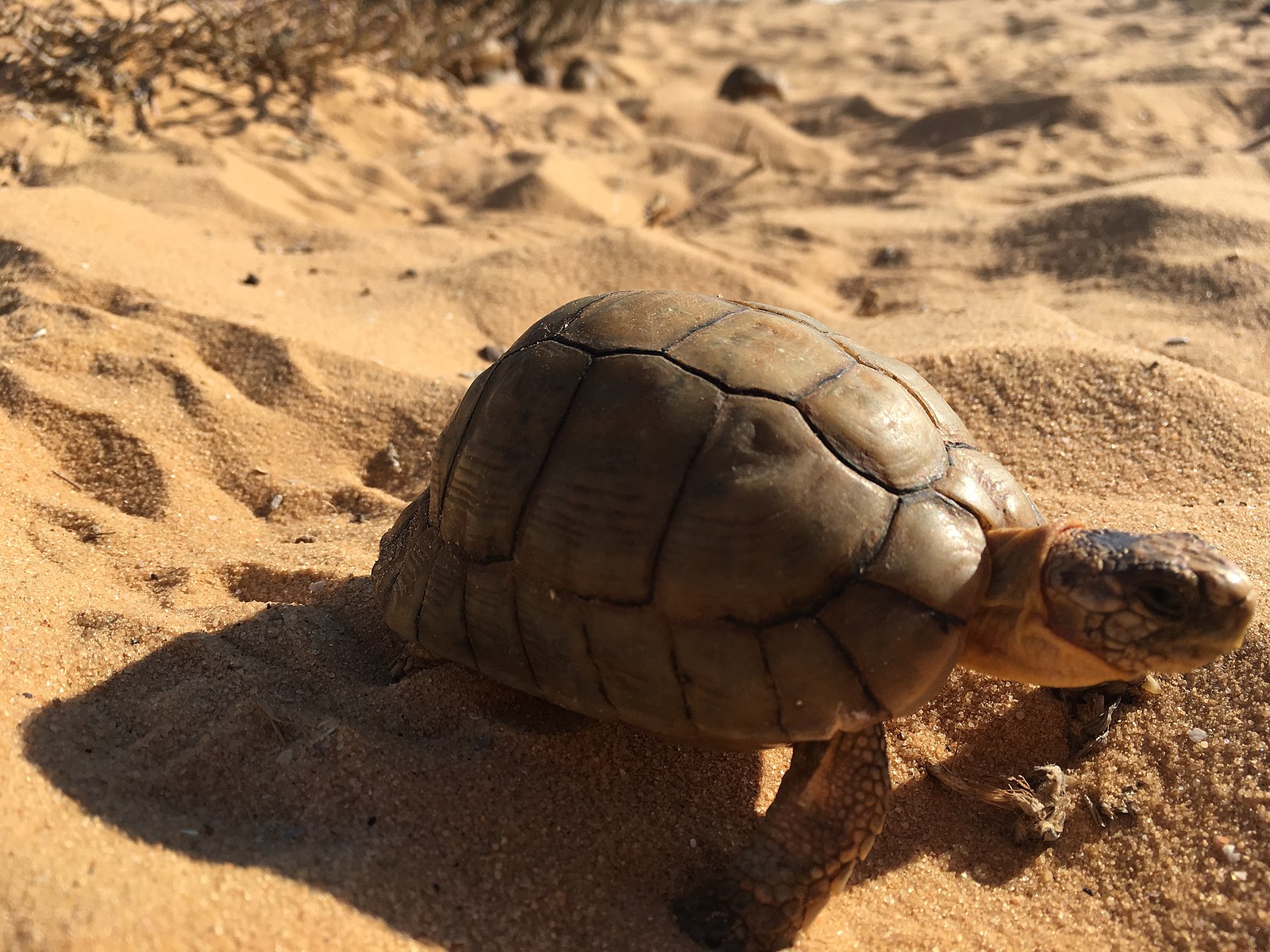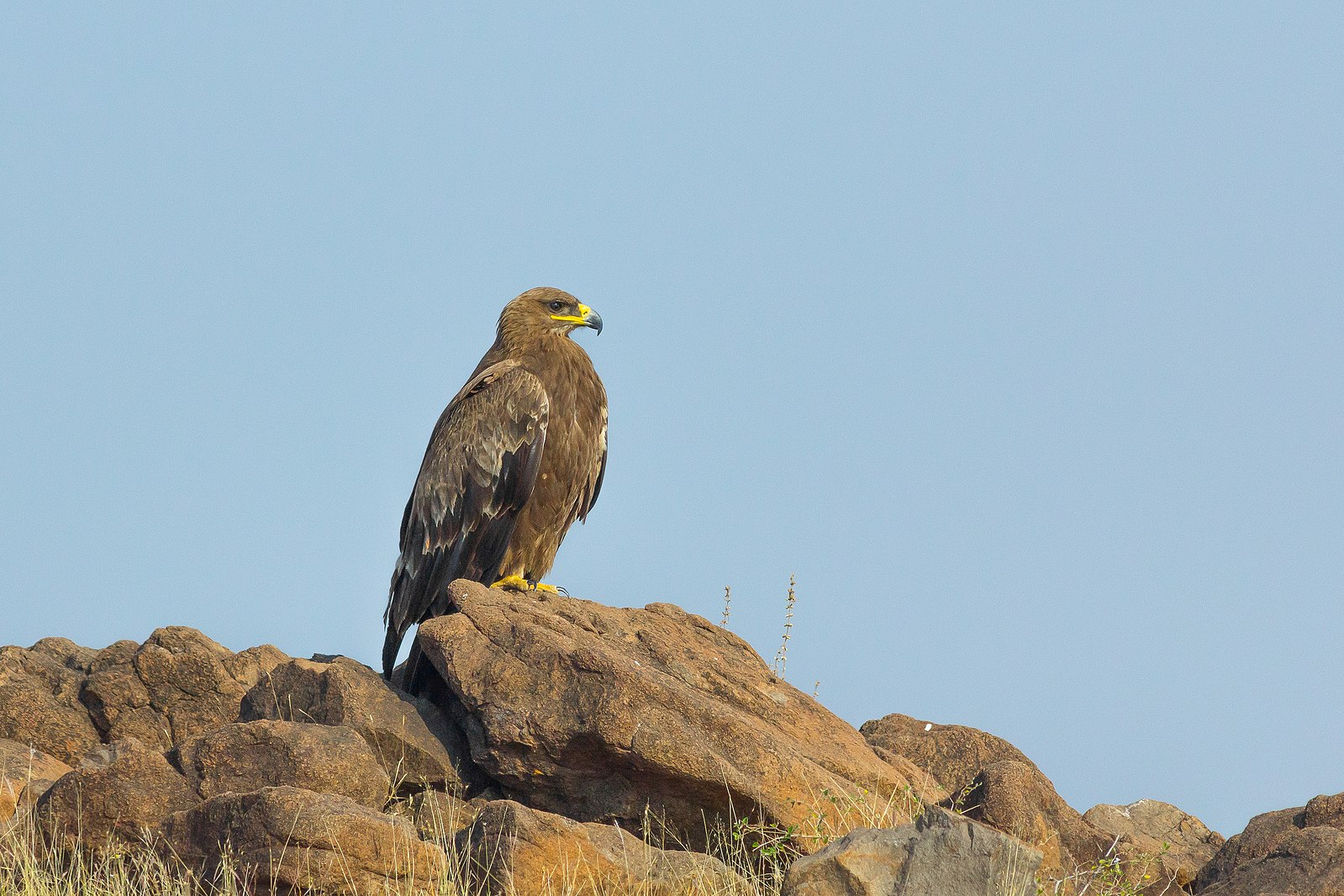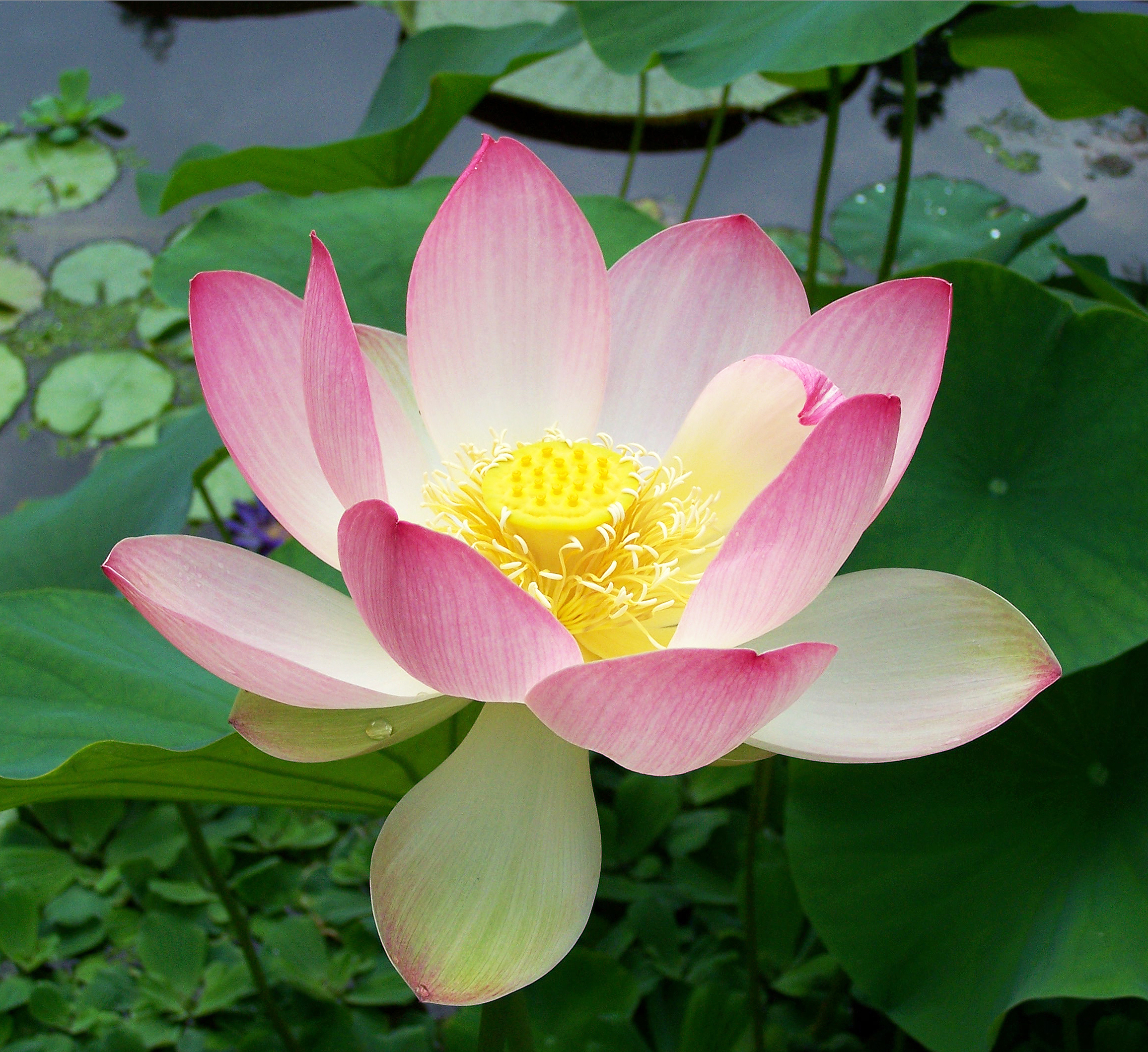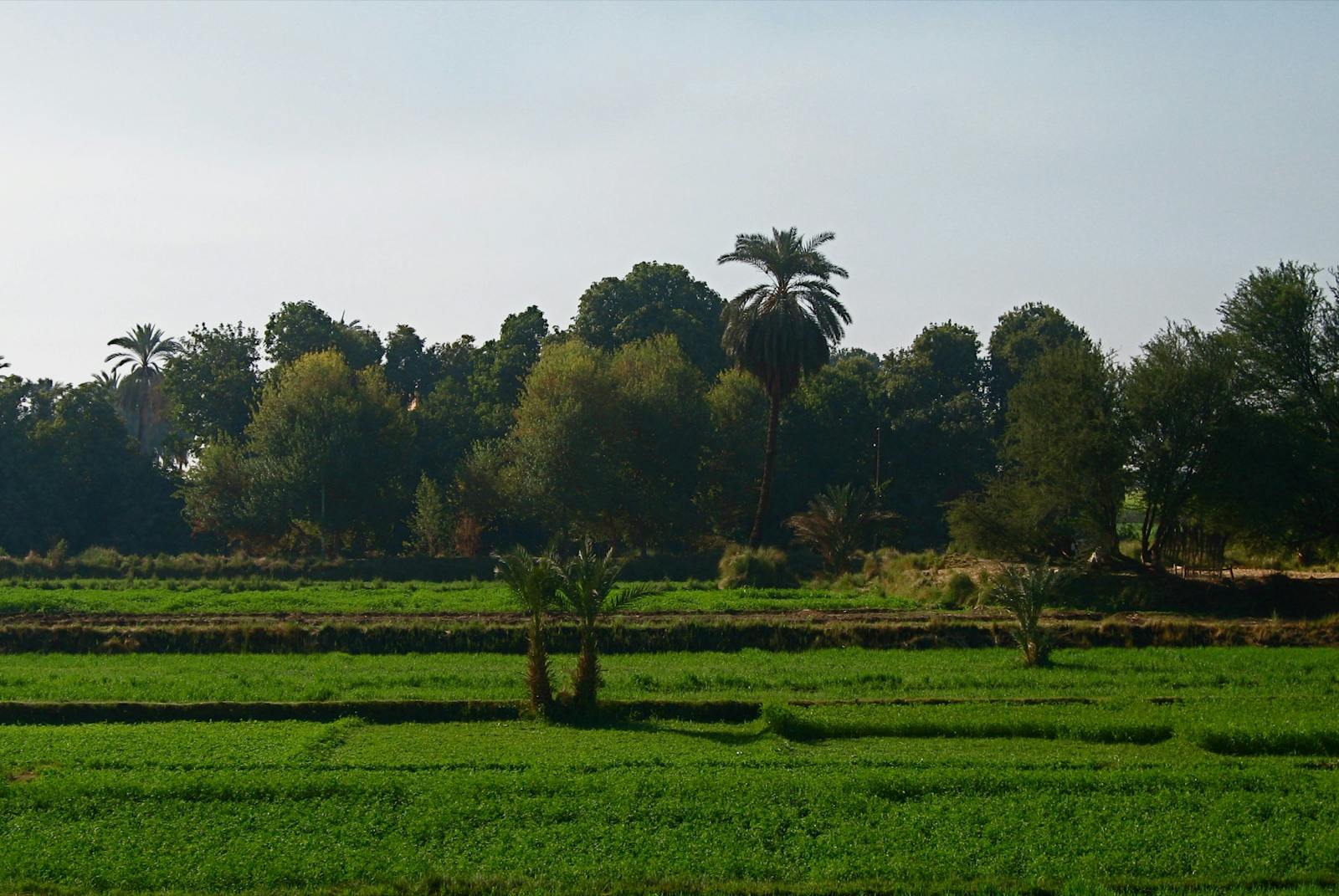Nile Delta Flooded Savanna
The ecoregion’s land area is provided in units of 1,000 hectares. The conservation target is the Global Safety Net (GSN1) area for the given ecoregion. The protection level indicates the percentage of the GSN goal that is currently protected on a scale of 0-10. N/A means data is not available at this time.
Bioregion: Northern Sahara Deserts, Savannas & Marshes (PA24)
Realm: Southern Eurasia
Ecoregion Size (1000 ha):
5,094
Ecoregion ID:
744
Conservation Target:
19%
Protection Level:
0
States: Egypt
Inundated by the longest river in the world, the Nile delta and surrounding wetland areas are part of the world’s most important migration routes for millions of birds stopping over between the Palearctic and Afrotropical realms. Species include the white stork, great white pelican, and the short-toed snake-eagle.

The flagship species of the Nile Delta Flooded Savanna ecoregion is the Egyptian tortoise. Image credit: Creative Commons
The ecoregion extends along the Nile River from the Aswan High Dam 1,100 km downstream to the mouth of the Nile, and includes the delta in the North, which is about 175 km long and 260 km wide, opening to the Mediterranean sea. The delta experiences a Mediterranean climate, with summer temperatures at a maximum in July and August (mean 30°C, max. 48°C) and winter temperatures of 5° to 10°C. Only 100 mm to 200 mm of rain falls each year and it is concentrated in the winter.
The main tributaries are the Bahr el Jebel, the Bahr el Ghazal, and the Sobat River, which combine and become the White Nile, as well as the Blue Nile and the Atbara River. The Nile River previously braided into many channels as it flowed through the delta, depositing and moving unconsolidated, alluvial sediments brought from up river. Construction of the Aswan High Dam greatly reduced flow levels and stopped the flooding of the riverine floodplains and delta. The outer margins of the delta are eroding, and salinity levels of the lakes and coastal lagoons are rising as their connection to the sea increases.
The ecoregion supports a mixture of Palearctic (European) and African species. The Nile has been connected to the Niger and Chad water systems at various times in the late Pleistocene, through a series of shallow lakes in the Sahara Desert. Therefore, the three river systems share similar flora and fauna, and endemism in the Nile is low. The Nile River, within Egypt, has at least 553 plant species associated with it, of which at least 8 species are endemic.
-CC-Andrej%20Chudy%CC%81-2010.jpg)
Little gull. Image credit: Andrej Chudy, Creative Commons
Every year, millions of birds migrate between Europe and Africa along the ‘eastern African flyway’, and the wetland areas of Egypt are especially important as stopover sites. The white stork, black stork, common crane, and great white pelican as well as birds of prey like short-toed snake-eagle, booted eagle, steppe eagle, and European honey-buzzard can all be found. Several hundred thousand waterbirds winter in the delta, including the world’s largest concentrations of little gull and whiskered tern in Lake Manzala.

Steppe eagle. Image credit: Creative Commons
Among mammals, European species include the common otter and the red fox. The ecoregion also supports the endemic Damietta toad and Flower’s shrew. Aquatic reptiles include Nile monitor and Nile crocodile as well as two marine turtles which breed at Lake Bardawil in the delta, the loggerhead and the green turtle. The critically endangered Egyptian tortoise lives in the dunes and islets of this ecoregion; it is severely threatened by habitat loss, illegal pet trade, and poaching for folk medicine.
-CC-Charles%20J%20Sharp-2016_resized.jpg)
Nile monitor lizard. Image credit: Charles J Sharp, Creative Commons
The completion of the first Aswan Dam (between 1912 and 1934) dampened the annual flood pulse in the Nile Delta. The completion of the second Aswan (High) Dam totally stopped flooding and most of the former flooded habitats have subsequently been converted to settled agriculture. Only fragments of the former wetlands remain and the ecoregion is largely unprotected.
Ashtoun el Gamil-Tanee Island Natural Area and the Lake Burullus Ramsar site are the only two protected areas in the delta. Ashtoun El Gamil was created largely to protect gravid fish and fry as they journey in and out of Manzala Lake, and is not large enough to contain any suitable waterfowl habitat. Additionally, along the River Nile, there is a nature reserve, Wadi El Assuti.
-CC-Charles%20J%20Sharp-2014.jpg)
Whiskered tern. Image credit: Charles J Sharp, Creative Commons
Population densities average 1,000 persons/km2, with much higher densities occurring in major towns, resulting in a huge pressure on natural resources. People has settled in the area around 250,000 years ago and have been farming intensively here for more than 5,000 years. Since the dam constructions, the delta ecosystem no longer receives a yearly input of sediments and nutrients from upstream. Consequently, large amounts of fertilizers are applied to the land each year. Run-off of fertilizers, dumping of wastewater, sewage sludge, and industrial effluents are leading to the accumulation of trace elements in the delta’s sediments.
Additionally, salinity may continue to increase in the delta as the delta face erodes and opens the existing lagoons to the sea allowing infiltration by seawaters. Wetlands and other migrating birds are hunted and trapped to provide a food source for local populations, and for sale to other countries (e.g. quail trapping). Other concerns include the impacts of climate change, for example, water scarcity, desertification, and sea level rise, which could result in inundation of low lying land.

Sacred lotus. Image credit: T.Voekler, Creative Commons
The priority conservation actions for the next decade will be to: 1) increase water quality monitoring via fixed stations which have monitoring probes; 2) enhance sustainable agricultural practices and implement irrigation and drainage management programs; and 3) increase the protected area network to maintain the important wetland sites.
Citations
1. El-Ramady, H.R., El-Marsafawy, S.M. and Lewis, L.N. 2013. Sustainable agriculture and climate changes in Egypt. Sustainable agriculture reviews. pp. 41-95
2. El Gohary, R. 2015. Agriculture, industry, and wastewater in the Nile Delta. International Journal of Scientific Research in Agricultural Sciences. 2(Proceedings), pp.159-172.
3. Baha El Din, S.M. 1999. Directory of important bird areas in Egypt. Cairo, Egypt: Palm Press


.png?auto=compress%2Cformat&w=300)

